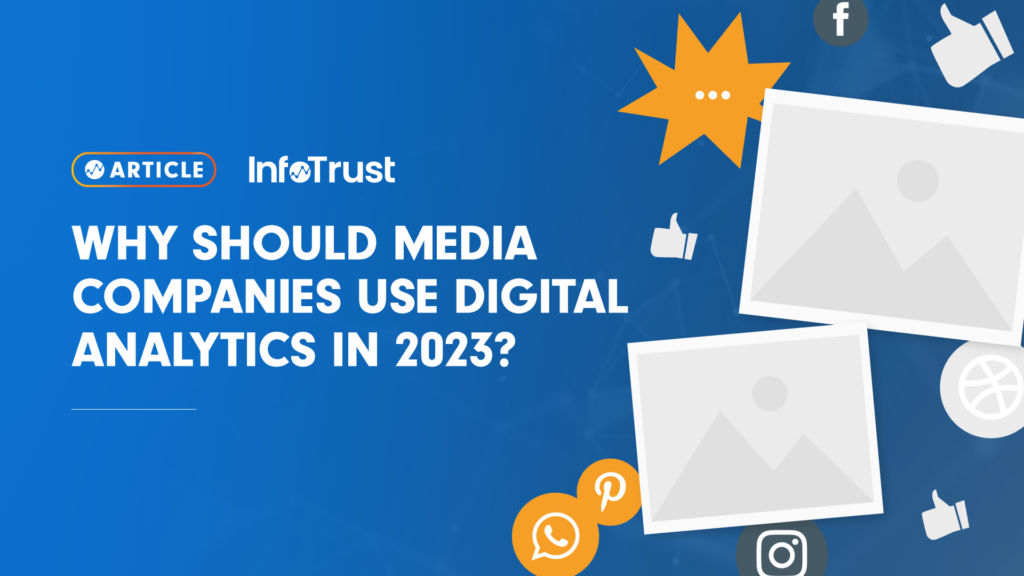OK, I get it. Nielsen TV ratings is where it is at. Everyone uses it and always has. It is the gold standard in media measurement. But let’s be honest, Nielsen TV ratings are fundamentally flawed. It relies on a sample—in fact, a fairly small sample—of end users of television. While this sample may be statistically significant, it is still a sample.
There is also a major shift away from how users watch TV as well. The days of watching it over the air, or even through cable, are fast going away. Users are moving more and more to streaming apps, even for local content. Where once you only had a handful of apps, now most major networks have a streaming service, as well as multiple services that give you all the channels, even local ones.
What if I told you there was a way to see exactly what your users were doing with video, especially in this new world of streaming? Things like how users found your app or video, what they are searching for, how much they watched, where they went next? Wouldn’t your marketing and media development teams love to have this data? Imagine being able to tell what campaigns, placements, and even creatives drove someone to a particular channel or program—or being able to not just know what was being watched, but just how far through a program people were getting.
Sounds amazing, right? Maybe even impossible? Not really. With modern analytics packages you can do all these measurements and more.
Let’s take for example a streaming app for your TV station. With proper analytics implemented you would be able to measure the following for every user:
- How a user found out about your app (ie, from search, a marketing campaign, an email, etc.)
- How they use your app
- What do they search for
- What do they watch
- How much of what they watch do they complete
- What do they watch next
- What ads do they watch and how much of each ad (trust me, your ads team will LOVE this data!)
- And for the user themselves
- Do they return? How often?
- Do they subscribe/utilize an upsell?
- What days and times do they use your app?
- Do they have push messaging enabled?
Just imagine the possibilities with this data. Your media buying team will know when to run ads and what kinds of ads to run. Your media sales team will know the best spots and ad lengths that bring the most revenue. Your marketing team will know what assets and channels work best to drive users to your app. Your content team will know what kinds of content work best for your audience, and just how far through a piece of content users get. And any teams working on upsells or subscriptions can use this data to best drive the outcomes they desire.
And how do we accomplish this magic?
There are three ways to add analytics to streaming apps:
- Software Development Kits (SDKs) that support native digital analytics vendors’ integrations with apps. Depending on the digital analytics tool and streaming platform combination you use, they may or may not be available. For example, if you have an iOS, an Android, a Roku app, and Google Analytics, you are out of luck. Firebase doesn’t provide an SDK to get analytics from Roku unfortunately.
- On the other hand, if you have an iOS and an Android app only, Firebase is the way to go. Firebase provides SDKs that integrate Google Analytics directly into these apps.
- Send user interaction data directly to an analytics vendor server via HTTP requests (also known as Web APIs). This allows clients to query a streaming platform server for a specific set of data from that server. In order for it to work, the video player API needs to be exposed or available for developers to query the data they need.
- Third-party connectors, which are completely platform-agnostic and work with any digital analytics vendor and any streaming platform combination of your choosing. All of the data is stored server-side and processed, transformed, and distributed to be sent to any end point, which can be your data warehouse or a digital analytics vendor.
This does take a bit of dev work as you can see, depending on the analytics platform and methodology used, but I think we can agree that the data returned is well worth it.
But what if I have multiple apps?
Well, let’s set up analytics on each app and aggregate data across all platforms to understand audience overlap, acquisition, and retention challenges for each. Do users on Apple TV interact differently with media than users on Fire TV? How did those Samsung users find your app? And of course, the most burning question: do we need to invest more money into iOS or Android?
Now isn’t getting this first-party data much better than looking at a statistical sample from Nielsen? Wouldn’t your team members deeply appreciate getting this user data at this level of detail and having a way to merge it with their CRM and marketing spend data?
How do I get started?
You can always look at the measurement solutions out there, from big names like Google Analytics and Adobe Analytics, plus other third parties. Again, the level of implementation complexity will be different by platform.
You also can turn to an analytics agency with expertise in implementing analytics across streaming and mobile platforms—like InfoTrust. We have many clients with successful implementations of analytics on connected TV (CTV), over-the-top (OTT), native and hybrid mobile apps, game consoles, as well as websites that are using this data today.
So don’t wait. As more and more users embrace streaming services, it will be critical to measure these touchpoints and app usage to be successful.


